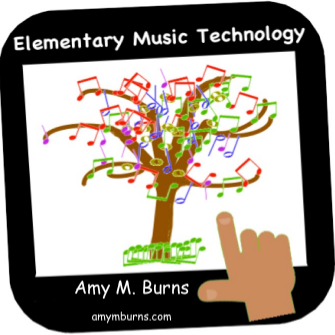🎷 Jazz Up Your Classroom with This Free “In the Mood” Play-Along for Jazz Appreciation Month!
Looking for a fresh, fun, and challenging way to celebrate Jazz Appreciation Month in your music classroom? 🎶 This play-along to Glenn Miller’s popular swing tune, "In the Mood," is just what your upper elementary or middle school students need to dive into the world of jazz!
This activity brings America's big band sound right into your room—while building rhythmic accuracy, note-reading, and ensemble skills.
🎶 What’s Special About This Play-Along?
This advanced-level play-along, set to a high-energy performance by The United States Army Field Band’s Jazz Ambassadors, includes:
Syncopated rhythms and offbeat patterns
Chromatic notes that challenge your more advanced learners
Opportunities to play along using Boomwhackers, rhythm sticks, keyboards, or digital tools like PlayXylo.com
A recording that swings hard and motivates students to level up their skills
Don’t worry—it’s challenging, but totally doable. You can adjust the tempo on YouTube using the settings tool, or better yet, use the free “Transpose ▲▼ pitch ▹ speed ▹ loop for videos” Chrome Extension to make tempo changes in smaller increments or adjust pitch and loop sections. That way, your students can learn at their own pace.
How to change the speed of a YouTube video.
In the Mood by Glenn Miller
This play-along video is from the video recording by Staff Sgt. Anthony Pocetti and audio recording by Staff Sgt. Ricky Furr. The song is performed by The United States Army Field Band, America's Big Band, The Jazz Ambassadors. I adore this recording and their performance and wanted to celebrate it for Jazz Appreciation Month (JAM).
Glenn Miller's "In the Mood" is a classic big band jazz instrumental that was first recorded in 1939. It has since become one of the most recognizable and popular songs of the swing era. "In the Mood" has been covered by numerous artists and featured in many movies and TV shows, making it a classic that continues to inspire and entertain music lovers around the world.
🧠 How to Teach It
Step 1: Start slow. Use the included screenshots to introduce the chord progressions and melodic phrases. Students can see and hear how their parts fit into the full arrangement.
Step 2: Project the visuals or upload them to your LMS so students can practice the patterns.
Step 3: Use PlayXylo.com on your classroom screen to reinforce note-reading and keyboard skills.
Step 4: When students are ready, play along with the YouTube video at .50 speed, then increase to .75, and finally challenge them with full performance tempo!
Pro Tip: Magnify the manipulatives so students can clearly see the note names inside each notehead—this will help them gain confidence and independence.
Practicing the Chords
The screenshots below give the students a chance to explore and perform the chords in the order that they appear in the song. That is helpful so that they can anticipate when their note or chord will appear, as well as give your more advanced musical students the opportunity to analyze and name the chord.
Project the images on a large screen or place them on a learning management system, so that the students can practice the progression slowly. As they progress, increase their tempo. When they are ready, have them play along with the YouTube video. Begin at .50 speed, then increase it to .75, and then challenge them to try it at the performance tempo. And remember that the “Transpose ▲▼ pitch ▹ speed ▹ loop for videos” Chrome extension can increase the tempo in smaller increments.
📎 Download the Free Manipulatives!
Ready to bring this to life in your classroom? You can download the chord screenshots and visuals for free from my Buy Me a Coffee page:
👉 Grab the Free "In the Mood" Manipulatives Here (https://buymeacoffee.com/elmusedtech/extras)
These are classroom-ready and designed with music teachers like you in mind—save prep time and start jamming right away.
🥁 Why This Play-Along Works
✅ Engages students with a real jazz ensemble performance
✅ Encourages rhythm and note fluency through visual + aural learning
✅ Perfect for Jazz Appreciation Month or anytime you want to explore jazz styles
✅ Integrates tech tools in an educational and effective way
Let this be a fun jazz lesson this month! Your students will not only enjoy playing along to a jazz classic—they’ll also develop important music literacy skills while having a blast.
🎺 Celebrate Jazz Appreciation Month with this unforgettable play-along experience. Click, download, and let the swing begin!







